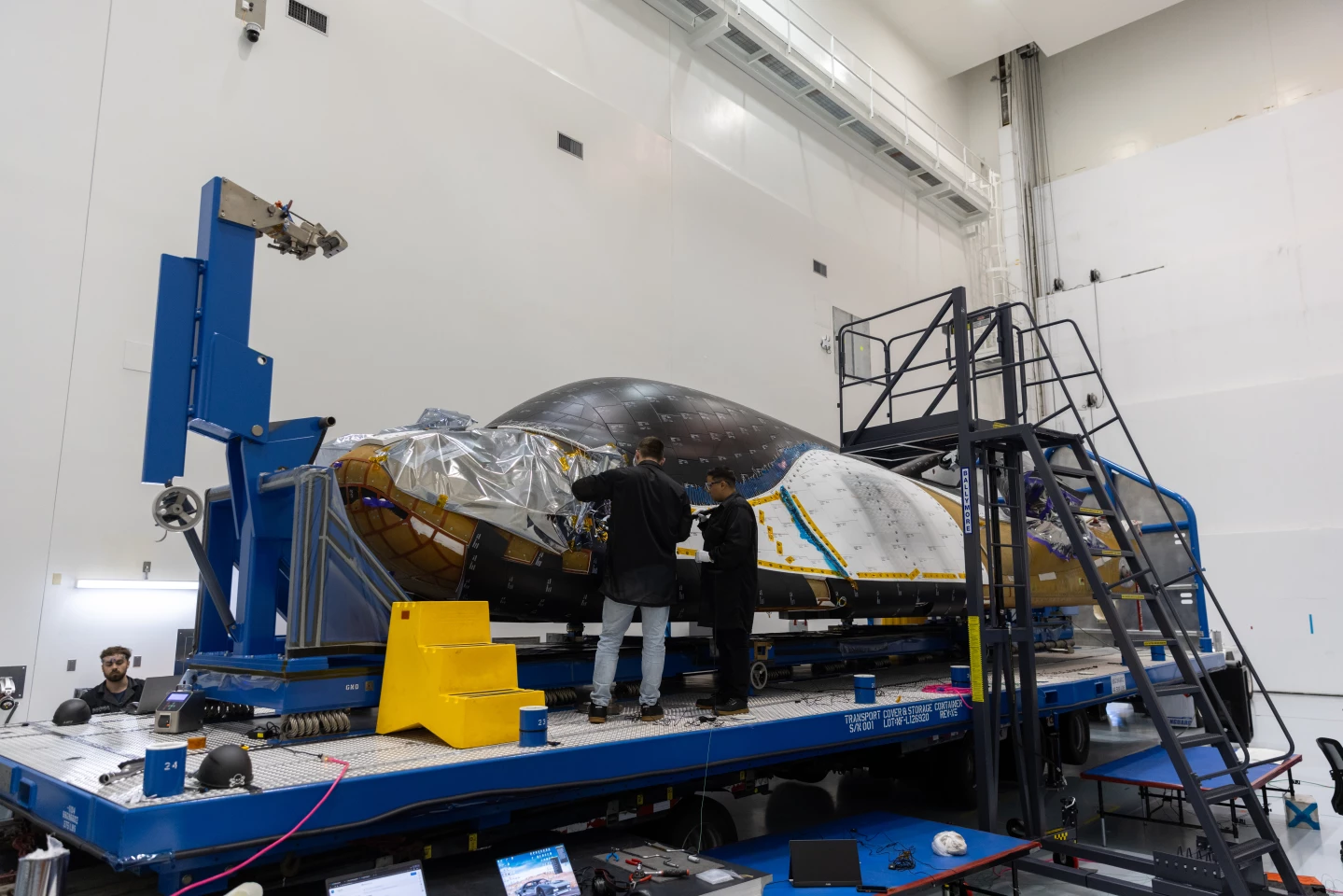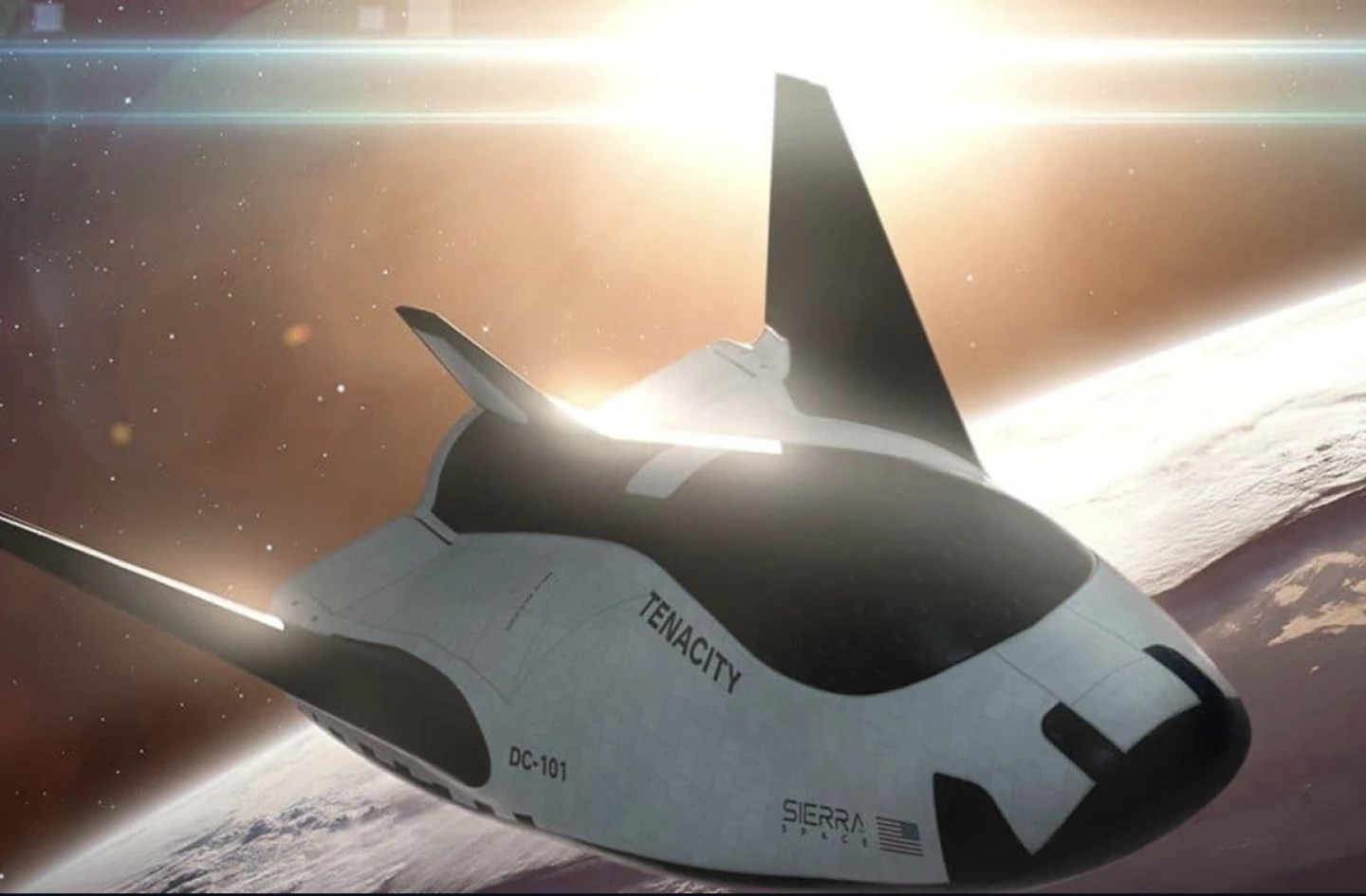The world's first winged commercial spaceplane has arrived at NASA’s Kennedy Space Center in Florida, its final destination before its first mission to the International Space Station (ISS) later this year.
Following rigorous testing at Ohio's Neil Armstrong Test Facility, the Dream Chaser DC-100 spaceplane named Tenacity got the green light to commence final pre-launch preparations, such as finishing its thermal protection system and payload integration, before it hitches a ride on a United Launch Alliance (ULA) Vulcan rocket to deliver 7,800 pounds (3,540 kg) of food, water and science experiments to the ISS.
It's been a long road for Tenacity and its makers, Sierra Nevada Corporation (SNC) (with the project now under the independent arm, Sierra Space). The Dream Chaser has been in development since its announcement in September 2004, and was initially set to be part of NASA's Commercial Crew program, shuttling astronauts to the ISS and back. However, it was usurped by Boeing and SpaceX in 2014, with the two companies awarded Commercial Crew Transportation Capability (CCtCap) contracts worth a combined US$6.8 billion. SNC failed in a challenge to this, and at the time the Dream Chaser seemed more like Dream Dashed.
However, the Dream Chaser quickly came back into NASA's focus and in 2016 a more compact, uncrewed spaceplane was picked up by the space agency to become the first of its kind to carry vital cargo to the ISS – as well as bring critical cargo back to Earth. A good move by NASA, too; Boeing's Starliner – which won the company that 2014 CCtCap contract – has been plagued by problems and delays, and is still yet to complete a crewed launch. (After delays, a rescheduled launch is planned for Saturday, May 25.)

Tenacity will be the first of a fleet of versatile, reusable lifting-body spaceplanes designed for these low-orbit 'delivery runs.' It has both internal thrusters with three modes for precise maneuverability to nail ISS landings, and fixed wings that allow it to re-enter Earth's atmosphere and autonomously touch down on Kennedy's runway at 1.5 g – a "firm" landing that's compatible with commercial runways around the globe.
What won't be returning to Earth in one piece is Tenacity's paired Shooting Star cargo module, which arrived at Kennedy on May 11. The compact 15-ft (4-m) module, which can house up to 7,000 lb (3,175 kg) of cargo and an additional external store, is designed to burn up upon reentry. Essentially, it and as much as 8,500 lb (2,590 kg) of trash will disintegrate thanks to the Earth's atmospheric-pressure-fueled fiery incinerator.
Well, we think we now know why it's been named "Shooting Star"…

Tenacity is expected to launch from Space Launch Complex-41 at Cape Canaveral Space Force Station, and spend around 45 days docked at the ISS before it bids farewell to its cargo module and cruises down for a horizontal landing on Kennedy's runway. It'll return with as much as 3,500 lb of cargo, including important scientific data from work performed at the space station.
Sierra Space says it will be operating a production line for the assembling of Shooting Star modules, with a new one needed for each mission. NASA says it will undertake at least seven cargo missions with Tenacity, potentially scaling up the spaceplane's carrying capacity and extending missions to up to 75 days.
Catch up on long path to lift-off in this video below.
Source: NASA








